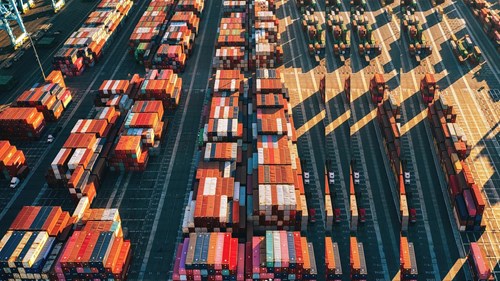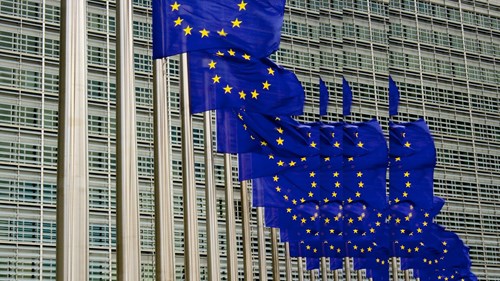Investment screening: EU Commission’s annual report shows continuity in screening decisions amidst decline of FDI
In mid-October, the EU Commission published its Fourth Annual Report on the screening of foreign direct investments (FDI) into the Union. In the report, the Commission gives an overview of the evolution of foreign direct investments in EU Member States and the frequency and outcomes of investment screening procedures. It also provides an outlook for the future of investment screening at the EU level. Germany remained the top target country for foreign direct investments into the EU in 2023, and the US was still the top country of origin. The majority of equity stakes acquired across the EU involved manufacturing and information and communication technologies (ICT) (A.). Almost all EU Member States now have the instrument of investment screening available to address potential dangers of such investments (B.). The Member States are largely using this instrument in the same way as in previous years, meaning that the screening procedures commenced and the restrictions are within familiar ranges (C.).
A. Germany and US dominate; Commission focuses on Chinese investments and semiconductors
The EU Commission observed a total of 3,800 foreign direct investments in 2023 (2022: 5,000) (Foreign direct investments include new company start-ups and M&A deals/acquisitions of equity stakes > 10%). Net FDI flows into the EU remained negative in 2023 (-€50 billion). In contrast to the global trend of declining net inflows, however, the EU’s net deficit narrowed noticeably against the previous year (-€135 billion). M&A transactions in the area of FDI shrank by 13% in 2023 on a year-on-year basis. The decline was even more pronounced for greenfield investments (also known as “greenfields”), which fell by a third.
Direct investments into the EU mainly originated from the US and the United Kingdom. As in previous years, the US was the top country of origin for foreign direct investments in 2023 (30% of acquisitions and 36% of greenfield investments), closely followed by the United Kingdom (25% and 21%). FDI-relevant M&A transactions from both the US and the UK declined compared to 2022 (US: -20%, UK: -17%). This was even more pronounced for greenfield investments (US: -45%, UK: -29%). By contrast, offshore financial centres gained in significance (M&A transactions +26%).
Germany was once again the top target country for acquisitions of equity stakes. In 2023, 19% of all M&A transactions involved German companies (as opposed to 18% in the previous year). This corresponds to almost 350 transactions. Greenfield investments involved above all Spain, which was the main destination in 2023 and attracted a significantly higher share of all greenfields (24%, 2022: 18%).
In terms of sectors, the focus in 2023 was on retail, information and communication technologies, and manufacturing: more than half of foreign direct investment was in target companies in these sectors. Excluding greenfields and focusing just on M&A, manufacturing (26%/496 transactions) led the way, followed by the ICT sector (23%/428 transactions). Chinese FDI activities in the area of greenfield investments, which have repeatedly been eyed with suspicion in the past, declined in almost all Member States; when it comes to equity stakes acquired, however, countries including Sweden, Germany and Poland saw an increase.
The EU Commission also takes a special look at China’s and Russia’s equity interests in EU companies and FDI in the semiconductor sector:
- Chinese investors exert influence or control over around 49,300 EU companies, with the majority of them being controlled (31,900 cases). Almost a quarter of Chinese-controlled companies are based in Italy, closely followed by Germany and France (21% and 17%, respectively). If one takes a closer look at companies controlled by the Chinese government, France, Ireland and Germany stand out. The Chinese government often controls companies in the electricity sector (336 controlled companies, mainly in Italy, Spain and Germany) and the semiconductor sector (84 controlled companies, minority shareholdings in 34 companies). No fewer than 55 of the companies in the semiconductor industry controlled by the Chinese government are based in Germany.
- Russian investors control or exert influence over 30,000 EU companies. Most of the Russian-controlled EU companies are in the Czech Republic, which accounts for almost a quarter. This is followed by Latvia and Bulgaria, each with 14%, but also Germany (10%) and Cyprus (8.6%). A similar picture emerges for companies with Russian influence below the control threshold, with Italy instead of Cyprus featuring in the top five. The Russian government directly controls companies in the oil & gas and electricity sectors.
- In the semiconductor industry, the Commission recorded 68 foreign direct investments in the reporting year. Almost half of these were venture capital (VC) investments, of which there were 32 in the reporting year. This represented a decrease of 14% compared to the previous year. It is worth noting that these VC investments are increasingly concentrated in early-stage financing. M&A transactions made up 37% of foreign direct investments in the semiconductor industry (a 7% drop year on year). In terms of the number of transactions, the US remains the largest foreign investor, accounting for almost half of all transactions. In contrast, China accounted for just 3.6% – a further decline compared to 2022.
B. Investment screening introduced across the board
The instrument of investment screening has become widely established in the EU. It is part of the standard security policy instruments of Member States which can be used to review, restrict and prevent foreign direct investment. Twenty-four Member States have an investment screening regime, while the remaining three – Greece, Croatia and Cyprus – are in the process of adopting the relevant legislation.
C. FDI assessments opened in majority of cases; share of restrictions stable
Reports from EU Member States show stable conditions for 2023 with regard to the review proceedings opened, clearances and prohibitions. The Member States commenced review proceedings for 56% of the 1,808 reported foreign direct investments or those taken up ex officio. However, this slight increase over the previous year (2022: 55%) did not lead to stricter treatment: in 2023, formal screening overwhelmingly (85%) resulted in clearance without any conditions. In a further 10% of cases, the authorities cleared the transactions subject to conditions (2022: 9%); formal prohibitions occurred in only 1% of cases, which is in line with the long-term average. Yet this figure does not take into account the 4% of notifications that were withdrawn by the applicants before a formal decision was taken.
In 2023, 18 Member States submitted 488 notifications under the EU screening mechanism, continuing the trend of increasing notifications in previous years. It is noteworthy that notifications are increasingly being made for direct investments involving multiple EU jurisdictions. The proportion of these multi-jurisdictional transactions rose to 36%, compared to between 20% and 29% in previous years. The Commission is using these figures as an opportunity to promote its recast of the screening regulation. In addition to harmonising which transactions must be reported and reviewed, the Commission is seeking to improve coordination on the assessment of these multi-jurisdictional transactions.
The Commission concluded the vast majority of cases reported within 15 days in Phase 1 of the EU screening mechanism (not to be confused with the corresponding phases of the national procedure); it opened an in-depth review in just 8% of cases. Almost two thirds of the cases for which this Phase 2 of the EU screening mechanism was initiated concerned the manufacturing and ICT sectors. In the manufacturing sector, the main reason for conducting an in-depth review was sensitive technologies – especially for technologies in the defence, aerospace and semiconductor sectors. This was followed by critical infrastructure and security of supplies.




